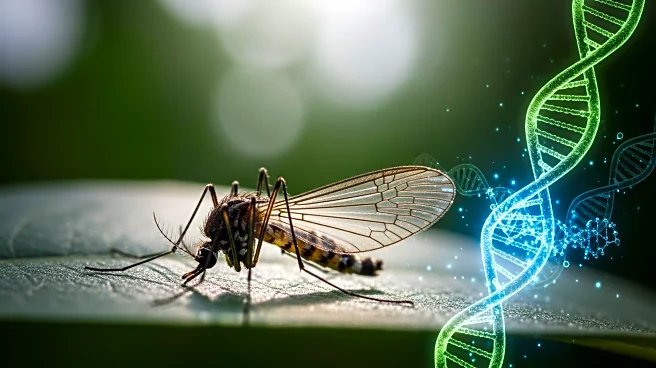What's Happening?
A recent study has uncovered the prevalence and genetic diversity of Wolbachia strains and their associated prophage WO in mosquito populations from Ethiopia. Using genetic markers, researchers characterized
infection rates and variability across mosquito species. The study found that Wolbachia was present in all mosquito species examined, with varying prevalence. Notably, the Cx. pipiens complex showed a 100% infection rate. The research highlights the potential for Wolbachia-based biocontrol strategies, as certain strains are known to cause cytoplasmic incompatibility, which can suppress mosquito populations.
Why It's Important?
The findings are significant for public health and mosquito control efforts, as Wolbachia can potentially reduce the transmission of mosquito-borne diseases. By understanding the genetic diversity and prevalence of Wolbachia, researchers can develop targeted biocontrol strategies that leverage the bacterium's ability to manipulate mosquito reproduction. This approach offers an environmentally friendly alternative to chemical insecticides, addressing concerns about insecticide resistance and environmental impact.
What's Next?
Further research is needed to assess the compatibility of novel Wolbachia strains with local mosquito populations and their long-term stability under diverse environmental conditions. Whole-genome sequencing and multi-locus sequence typing could provide deeper insights into Wolbachia's genetic diversity and its applications in vector control.











